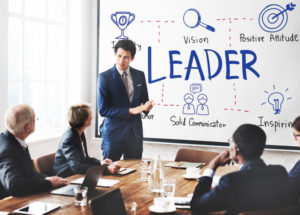CATEGORIES
#Gen Z #Technology #Work CultureOverview:
- Terms like ‘Slay’ or ‘Lit’ are prevalent among Gen Z, while millennials are still adjusting to their rapid adoption.
- Millennials experienced the transition to the digital era, whereas Gen Z was born into it.
- Millennials value collaboration, while Gen Z favors competition, with the environment playing a pivotal role in shaping these perspectives.
- The cornerstone of cultivating a positive and thriving workplace depends on the seamless collaboration between these two cohorts.
I struggled to comprehend the phrase ‘Go girl, slay!’ as I was unfamiliar with the meaning of ‘slay.’ However, after discussing with my friend Chat GPT, I learned that it signifies performing or looking exceptionally well. This realization left me feeling a bit out of touch with modern slang.
Terms like ‘Slay’ or ‘Lit’ are prevalent among Gen Z, while millennials are still adjusting to their rapid adoption. They witnessed the change from the ‘Lagaan’ era to ‘3 idiots’, from playgrounds to smartphones, and from 2G to 5G. The quick transition demonstrates the societal change we all have been through.
The workplace presents a similar scenario. The onset of COVID-19 prompted uncertainty about returning to familiar ways. However, we adjusted to the new realities, through hybrid work setups and a complete transition to the digital realm. Despite this, the ongoing debate between Gen Z and Millennials remains unchanged. Several factors distinguish each of these generations from the other.

Dynamics of Learning: From Text to Tech
Millennials experienced the transition to the digital era, whereas Gen Z was born into it. They exhibit greater adaptability and resilience in the face of hybrid changes resulting from the global impact of COVID-19. Gen Z demonstrates adeptness in navigating technology and innovating with new digital tools in the workplace. In comparison to Millennials, Gen Z tends to be more proficient in utilizing technology.
Degree vs Skills
The New Education Policy 2020 exemplifies the significance of skill sets in the current era. Gen Z’s early exposure to digital learning tools and online resources has equipped them with the required skill set. Hence they are adaptable and show less reliance on traditional learning systems. While Millennials are adjusting to the innovative digital landscape, they may have leaned more heavily on traditional classroom approaches.
Work-Life Balance
Millennials are recognized for their emphasis on achieving a healthy work-life balance. They have a strong desire for continuous learning and are often open to changing jobs without much hesitation. According to a Gallup report, 21% of millennials switched jobs within the last year. This rate was three times higher than that of Gen Z. They place a high value on gaining experience and advancing in their careers.
On the other hand, Gen Z also places importance on work-life balance, but they prioritize financial security more prominently. This shift may be attributed to their experiences with economic challenges such as the global recession or the Covid-19 pandemic.

Collaboration vs Competition
Millennials value collaboration, while Gen Z favors competition, with the environment playing a pivotal role in shaping these perspectives. Growing up in the social media era, Gen Z prefers swift responses and is driven by results. On the other hand, Millennials prioritize open dialogue and deliberate decision-making. Both generations contribute to growth in their unique ways, employing different strategies to achieve their objectives.
Leadership Styles
Millennials typically lean towards inclusive leadership styles, placing equal importance on mentorship and receiving feedback from their superiors. Gen Z, on the other hand, values independence in decision-making and autonomy in task execution to enhance efficiency. However, both generations highly value receiving feedback.

Gen Z and Millennials: Foe or Friends
Amidst the ongoing debate between Gen Z and Millennials, a fresh perspective suggests it’s not a matter of ‘vs,’ but ‘and’. Gen Z and Millennials alike prioritize creativity and innovation in their professional endeavors. They actively exchange ideas and experiences across borders, fostering a global culture. Both generations are vocal advocates for their beliefs and values. Ultimately, Gen Z and Millennials share a common goal of personal and professional growth.
Conclusion:
Each generation carries unique differences, which define their individuality. These distinctive qualities are crucial in enriching the diversity of today’s market. The cornerstone of cultivating a positive and thriving workplace depends on the seamless collaboration between these two cohorts. The focus should not be on Gen Z vs Millennials, but rather on harnessing the potential opportunity in the collaboration. This new perspective will foster organizational growth and drive innovation alongside Gen Z and Millennials in the modern workplace.
FAQs:
What is the difference between Gen Z and millennials in the workplace?
The key difference between Gen Z and millennials is their leadership style. Millennials prefer an inclusive leadership style whereas Gen Z believes in autonomy to perform tasks effectively. Gen Z prefers competition whereas millennials believe in collaboration.
How do you engage Gen Z and millennials in the workplace?
Have fun along with performing tasks effectively, encourage open communication, promote healthy work-life balance, and adopt a flexible approach towards the employees.
What are the characteristics of Gen Z and millennials in the workplace?
Millennials exhibit the values of authenticity, collaboration, and inclusivity, whereas Gen Z values individuality, digital communication, and freedom of expression in the workplace.


